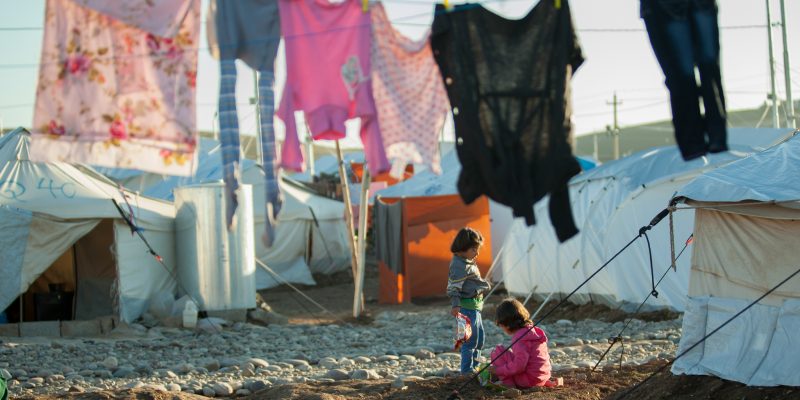1. Rome, no city for refugee
Claudia Torrisi’s report from Rome in Vice describes a city that is totally unprepared to receive, where the migrant crisis is treated merely as a public security issue, and to be solved by sweeping it away. As Annalisa Camilli wrote in Internazionale, “those who should open reception centres respond with police raids and evictions.” And things will probably take a turn for the worse, given the new anti-migrant stance of Rome mayor Virginia Raggi, explained by Nando Sigona in The Conversation.
2. Biella, tales of refugees trying to rebuild their lives in Italy
In 2016, more than 180,000 were rescued in the Mediterranean and brought to Italy. Among them was 19-year-old Malick from the Gambia, whose life story and attempt to rebuild a life in the town of Biella was told by photographer Cesar Dezfuli, from Open Migration to the Guardian.
3. From Britain to Italy, the story of a Palestinian-Syrian student facing deportation
Yousef is a young Palestinian-Syrian asylum seeker who was separated from his family by the war and forced to take the perilous journey to Europe alone, arriving to Britain via Calais and reuniting with his family in Middlesbrough. But while his loved ones all were granted refugee status, Yousef is now facing deportation back to Italy, after a two-year legal battle, in conformity with the Dublin Regulation. Read his story, as told by Lizzie Dearden in the Independent.
4. Mediterranean, why migrants keep risking it all
It is the most lethal migrant route in the world, yet thousands of people are still travelling along it. Why do migrants keep risking their lives crossing the Mediterranean from Libya towards Italy? Read Dionne Searcey and Jaime Yaya Barry’s article in the New York Times to find out.
5. Mediterranean, how the NGOs saving lives at sea became a scapegoat
Almost four years into the “refugee crisis” – with more than 500,000 people arriving in Italy from Africa on boats (or rather, dinghies) and the Mediterranean turned into a water cemetery for over 13,000 migrants – Italian politicians and media outlets have found a new scapegoat: the humanitarian organisations carrying out rescue operations at sea (which have come under fierce and baseless attack). Read Steve Scherer’s article for Reuters.
6. Mediterranean, why Libya cannot be an ally
As the NGOs work hard trying to rescue migrants at sea, EU and Italian leaders (especially the latter) are seeking to increase Libya’s role in stopping the flow of migrants. These articles by Clemens Höges and Claas Meyer-Heuer for Spiegel and by Aidan Lewis for Al Jazeera attempt to explain what is wrong with this strategy.
7. Athens, a squat for refugees facing eviction
Greek civil society is stepping in where the State has failed. The former City Plaza hotel in Athens has been occupied to house migrants and refugees: a veritable grassroots solidarity initiative (like the one we presented in our report by Eleonora Camilli) which is now under threat. Read Molly Crabapple’s op-ed in the Guardian.
8. Greece, a laboratory for EU pushback policies
One year after the EU-Turkey deal, a report by the Association for Juridical Studies on Immigration analyses the steps taken by Greece to stop the flow of migrants. A system that, as Ilaria Sesana explained in Altraeconomia, aims to revolutionise the right to asylum by limiting the rights that were historically granted to refugees.
9. Lebanon, the difficulty of celebrating Eid Mubarak for Syrian refugees
Muslims around the world are celebrating the end of Ramadan. But while Muslims everywhere had trouble observing the holy month (as Carol Kuruvilla wrote in the Huffington Post), for Syrians in Lebanon it was nearly impossible to find food to break the fasting every night during Ramadan, and on Eid-al-Fitr. Read the article in The Conversation .
10. Japan closes its doors on refugees
People from all around the world are seeking protection in Japan, yet in 2016 the country only granted it to 27 applicants. Annette Ekin’s report for Al Jazeera tries to explain why, and what the consequences will be.
Header photo: Mustafa Khayat (CC BY-ND 2.0).
Translation by Francesco Graziosi.









